There are three general categories of industrial cutting: thermal, erosive, and mechanical.
Thermal cutting process
A thermal process uses heat to cut or melt through the material being cut. Examples include oxyfuel, plasma, and laser cutting.
Here’s how each works:
|
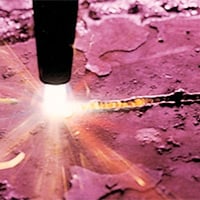 |
|
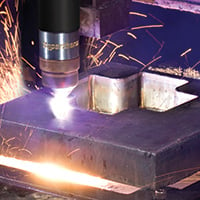 |
|
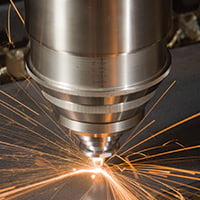 |
Erosive cutting process
An erosive process uses air, water, or other natural agents to wear away a material. Waterjet cutting falls into this category.
|
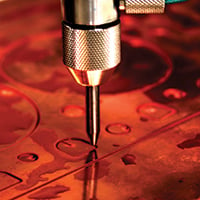 |
Mechanical cutting process
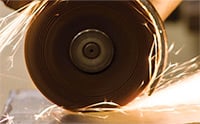 This process involves the use of physical forces to cut an object. Examples of this type of cutting include sawing, shearing, and drilling.
This process involves the use of physical forces to cut an object. Examples of this type of cutting include sawing, shearing, and drilling.
- Mechanical tools work by placing the cutting mechanism, such as a blade, into physical contact with the object being cut.
Some of these cutting processes can be either manual or automated:
Manual or handheld cuttingIn this mode, the torch or cutting head is manually controlled. With a little training, the user can simply pick up the tool and start cutting. |
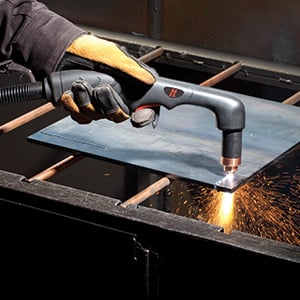 |
Automated cuttingAutomated cutting uses software, electronics, or other programmable media to direct the cutting process. The object to be cut might be a metal part, piece of foam, stone countertop, pipe—practically anything. Typical examples of automated cutting systems include CNC cutting tables, pipe cutters, and industrial robots. |
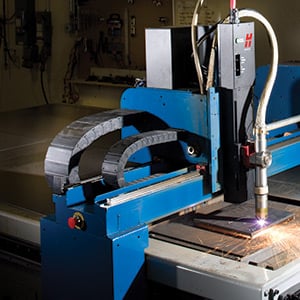 |
System components
Although robotic cutting methods are becoming increasingly popular, the most commonly used automated cutting method is still the X-Y cutting table. Together with a Computer Numeric Control (CNC), these tables are typically used in industrial settings to cut material like steel plate, foam, or flat stone.
An automated cutting system includes several components. Here’s a look the major components of a basic cutting system:
Power supply, cutting tool, and consumables — As the name implies, the power supply — whether plasma, laser, or waterjet — is what actually powers your cutting system. It provides the energy and wattage needed to move your cutting tool, whether that tool is a torch or a cutting head. Your torch or cutting head is your systems’ arm and hand. It is what actually does the cutting. Finally, your consumables are the items inside your cutting tool that wear out with use such as the copper nozzle in a plasma torch or the diamond orifice in a waterjet cutting head.
CNC – The CNC is the main communication interface between the operator and the machine. It tells the other components—and possibly even the operator—what to do.
The CNC:
- Converts the part program into command signals to precisely control the direction, speed and cutting processes of the machine
- Sends and receives signals to control the cutting process, machine functions such as motion, height control movement, and safety components
- May be used for online part programming or may utilize a part program from offline CAD/CAM software
Cables and wiring – All cutting tables have wires and cables that connect the CNC to the power supply and other system components.
Drive motors and gear rack – Moving the cutting tool up, down, and around the table requires the use of drive amplifiers, motors, and a gear rack that translate commands from the CNC into physical motion.
Table frame and slats – The table frame and slats physically support the movement of the cutting tools.
Height control (THC) – The height control (or, more commonly, Torch Height Control) ensures that the cutting tool doesn’t get too close or far from the work piece.
The THC:
- Performs Initial Height Sensing (IHS) by starting at the last retract height, lowering to the plate to establish the plate position, and retracting to the pierce height
- Regulates the height of the cutting tool throughout the cutting process to achieve the required cut quality
- Extends consumable life by positioning the torch away from molten metal during the pierce and collision detection to stop the cut process
Not sure which process or method to use?
You’ll find helpful information here:
Want to learn more about automated cutting?
Take our free "Automated Cutting Process" eLearning course on the Hypertherm Cutting Institute
